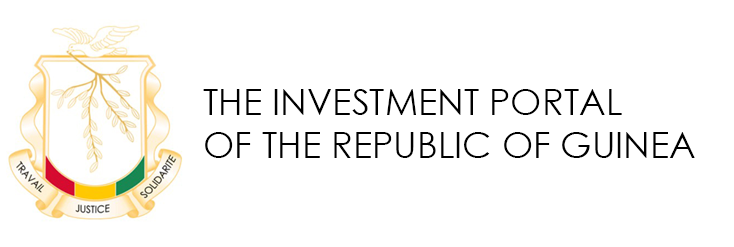The health sector in figures
11,529 healthcare professionals
986 health units
414 health centers
3 national hospitals
7 regional hospitals
26 prefectural hospitals
8 communal medical centers
Source: Ministry of Health /DNEHS/PNS 2014
SECTOR overview: HEALTH
In its constitution, the Republic of Guinea acknowledges health and healthcare as a fundamental right which takes precedence over other fundamental rights.
Like the Declaration of Alma-Ata on Primary Health Care, Guinea has subscribed to several international legal instruments on healthcare.
Since the ascension to power in 2010 of a new regime and with the onset of the Ebola epidemic health crisis in 2014 thereby leading to the re-assessment of the health system, major reforms are underway in the health sector.
The Ebola virus disease outbreak officially reported in March 2014 has had dire effects on the Guinean health system and great losses in human resources. There are two (2) underlying factors to the rapid spread of the disease:
· The country’s poor health systems and weak capacity to contain the spread of epidemics as well as the necessity to put in place institutions to prevent and respond to any epidemic outbreak.
· The vulnerability of the economy in view of the low financial income and poor socioeconomic infrastructure and institutions.
The Ebola virus disease created fear and mistrust within the health sector and the community in general.
This epidemic provoked slowdown in public health projects and programs, disrupted national health coordination and curtailed funding.
Following this unprecedented catastrophe, Guinea has endeavored to re-asses the relevance and effectiveness of its programs and current health policies.
This re-assessment program has eventually led to the drafting of a National Health Development Plan 2014, a Healthcare System Recovery Plan 2015-2017 and a Post-Ebola Socio-Economic Recovery Strategy 2015-2017.
The vision of the National Health Policy is to "build a new Guinea with a healthy, economically and socially productive population who should have universal and equal access to quality healthcare services".
Current situation
From the 2014 General Census, the population of Guinea is 10,628,972 inhabitants. It is composed of women in majority (51.62%).
In 2012, crude death rate was 10.19 ‰ and crude birth rate was 34%. Natural growth rate is 2.38% with a composite fertility index at 5.1. Life expectancy is 58.9 years.
From the epidemiological standpoint, the leading causes of death in the country are the result of injuries and infectious disease which are preventable by vaccination.
The Ebola virus disease (EVD) has had dire effects on the health sector. Almost all the health regions (7/8) and districts (31/38) were affected by the disease. Up to October 2015, 109 health workers were reported dead and 202 contaminated (confirmed and possible cases).
The EVD also contributed to the deterioration of existing health infrastructure and social and health indicators:
· Closing down of 94 health centers and a district hospital in late December 2014;
· Increased poor infrastructure, from 33% to 57% in public health facilities;
· Contraction of geographical accessibility rate of the population covered within 5 km from 53% in 2013 to 46% in 2014;
· Reduction by half of the number of consultations and hospitalizations;
· Declining vaccination coverage by 30%;
· Reduced funding for health districts by Technical and Financial Partners from 22% to 11% between 2013 and 2014.
Malaria prevalence remains high with a proportion of 44% parasitaemia in children. This disease represents 40.82% of all consultations and 45.30% for hospitalization cases in public health centers and 36% of all hospital deaths are due to severe malaria. It is the leading cause of mortality in children under 5.
Malaria is the first cause of consultation (34%), hospitalization (31%) and death (14%) in public and private health centers for all ages (National Program for the Fight against Malaria, PNLP).
HIV / AIDS remains a public health problem with a stable prevalence of 1.7% in 2012 in the general population. In 2011, HIV / AIDS accounted for 9% of consultations with an epidemic of type "widespread". Prevalence among pregnant women was at 2.5%.
Prevalence of smeared positive Pulmonary Tuberculosis (PTB+178) per 100,000 people remains high among co-infected TB / HIV patients. Moreover, meningitis, cholera and measles are rife with the endemic epidemic. Of other infectious diseases, 6% of children under age 5 had symptoms of acute respiratory infection and 16% diarrhea. These diseases represent the second and third causes of death among children under 5 years. Neonatal infections are also important causes of death in this age group. According to the DHS 2012, 31% of children under 5 suffer from chronic malnutrition, of which nearly half are severely anemic.
Note that non-communicable lifestyle diseases are increasingly spreading. From routine survey, they comprise diabetes with a prevalence of 5% in patients between 15 and 64 years, chronic respiratory diseases with 12.4% of school-based prevalence, cardiovascular disease with a prevalence of 28.1% of HTA, cervical cancer of the uterus at 0.5% in women, liver cancer at 31.5% for 100,000 and finally sickle cell disease with a prevalence of 11.57% according to Emmel’s test.
Neglected Tropical Diseases (NTDs) include trachoma with prevalence in hyper endemic areas of more than 3%, lymphatic filariasis: 10%, schistosomiasis 50% and geohelminths: 50%, onchocerciasis, Buruli ulcer and leprosy in the elimination phase (less than 1%).
Competitive advantages
Challenges
The major challenge the health system will face in the coming years is to expand health coverage to the entire population by strengthening health delivery services and developing community health.
To meet this challenge, the health system must overcome other challenges:
· Improve sector governance, provide quality and motivated human resources;
· Relieve direct health expenditure on households while ensuring adequate and equitable funding for the system;
· Make drugs, equipment and medical technologies available;
· Upgrade the healthcare information system and research.
Strengths
· The national health system is organized into three levels: central, intermediate and peripheral modeled after the administrative division;
· The health care system is hierarchical and respects the principle of orientation. Minimum outreach activities and complementary packages are defined for each level of care (health unit, health center, district hospital, regional hospital and national hospital);
· The private sector is innovating and making the sector competitive;
· There is a critical mass of health human resources;
· Community participation is forthcoming.
Opportunities in brief
With the onset of the EVD in 2014, the health sector is practically being rebuilt. The Guinean government is showing strong political will to improve the people’s health. It is proven by the inclusion of the health sector in the list of priority sectors within the national development policy.
The health sector needs are numerous. They cover infrastructure, equipment, training, undertaking studies, etc. The following major opportunities do exist:
· Construction and rehabilitation of health infrastructure
- Health centers (CS)
- Improved health centers (CSA)
- Communal medical centers (CMC)
- National hospitals
- Regional hospitals
- District hospitals
· Renovation / Expansion / Upgrading to health standards and equipping infrastructure
- Laboratories (biomedical equipment) and infectious disease units
- Warehouses (regional deposits PCG)
- National Institute of Public Health (reference laboratory P4)
- Computer and Office Equipment Supplies
· Studies and Supervision of infrastructure works & equipment
· Vehicles
· Supplies and drugs
· Staff training


